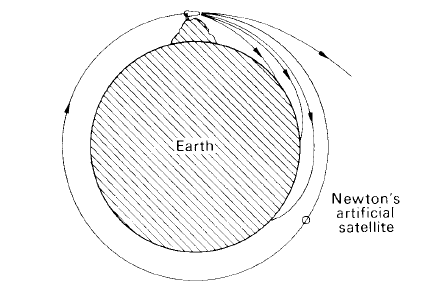
تاريخ الفيزياء

علماء الفيزياء


الفيزياء الكلاسيكية

الميكانيك

الديناميكا الحرارية


الكهربائية والمغناطيسية

الكهربائية

المغناطيسية

الكهرومغناطيسية


علم البصريات

تاريخ علم البصريات

الضوء

مواضيع عامة في علم البصريات

الصوت


الفيزياء الحديثة


النظرية النسبية

النظرية النسبية الخاصة

النظرية النسبية العامة

مواضيع عامة في النظرية النسبية

ميكانيكا الكم

الفيزياء الذرية

الفيزياء الجزيئية


الفيزياء النووية

مواضيع عامة في الفيزياء النووية

النشاط الاشعاعي


فيزياء الحالة الصلبة

الموصلات

أشباه الموصلات

العوازل

مواضيع عامة في الفيزياء الصلبة

فيزياء الجوامد


الليزر

أنواع الليزر

بعض تطبيقات الليزر

مواضيع عامة في الليزر


علم الفلك

تاريخ وعلماء علم الفلك

الثقوب السوداء


المجموعة الشمسية

الشمس

كوكب عطارد

كوكب الزهرة

كوكب الأرض

كوكب المريخ

كوكب المشتري

كوكب زحل

كوكب أورانوس

كوكب نبتون

كوكب بلوتو

القمر

كواكب ومواضيع اخرى

مواضيع عامة في علم الفلك

النجوم

البلازما

الألكترونيات

خواص المادة


الطاقة البديلة

الطاقة الشمسية

مواضيع عامة في الطاقة البديلة

المد والجزر

فيزياء الجسيمات


الفيزياء والعلوم الأخرى

الفيزياء الكيميائية

الفيزياء الرياضية

الفيزياء الحيوية

الفيزياء العامة


مواضيع عامة في الفيزياء

تجارب فيزيائية

مصطلحات وتعاريف فيزيائية

وحدات القياس الفيزيائية

طرائف الفيزياء

مواضيع اخرى
The Principia of Isaac Newton
المؤلف:
A. Roy, D. Clarke
المصدر:
Astronomy - Principles and Practice 4th ed
الجزء والصفحة:
p 173
11-8-2020
2473
The Principia of Isaac Newton
In this great work, Newton seized all the astronomical and physical phenomena available, organized them, demonstrated how they followed from his three laws of motion and the law of universal gravitation, predicted new observational data and laid the foundations of mathematical physics so firmly that much of the researches of mathematicians, scientists and astronomers in the next two and a half centuries became efforts to develop logically the consequences of his theory of the World. Among the contents of the Principia were the following:
He proved that a rotating globe such as the Earth would be flattened slightly at the poles due to the centrifugal force in its equatorial regions ‘diluting’ the force of gravity in these regions. This protuberance of matter at the equator would be acted upon by the Moon and Sun, causing the Earth’s axis of rotation to precess slowly like the axis of a spinning top or gyroscope so that the axis sweeps out a cone. The precession of the equinoxes, a consequence of this, had been discovered by Hipparchus about 134 BC but until Newton’s time had remained unexplained.
He proved that under the law of gravitation, a planet would move in an ellipse about the Sun under Kepler’s laws and that this ellipse would change slightly in size, shape and orientation over the years because of the attractions of the other planets. In this way he accounted for hitherto unexplained changes in the orbits of Jupiter and Saturn. He also showed how to measure the mass of any planet that had one or more satellites.
In the case of the Moon’s orbit—an extremely complicated problem that, as Newton once remarked to his friend Edmund Halley, ‘made his head ache and kept him awake so often that he would think of it no more’—he was able to prove that certain irregularities in its movement about the Earth were due to the Sun’s attraction and he predicted some features that were subsequently found by observation.
He even demonstrated (see figure 1) that if a projectile were fired with sufficient velocity from a cannon at the top of a terrestrial mountain so high it was outside the Earth’s atmosphere, it would describe a circle or ellipse about the Earth. It would, barring a collision, go on revolving about the Earth indefinitely. In other words, three hundred years before Newtonian science had developed far enough to put the first artificial satellite into orbit, Isaac Newton predicted its possibility.
He also explained the phenomenon of the tides as an additional consequence of the law of gravitation, laying the foundations of all the modern work on that subject. He showed that the orbits of comets were also governed by this law and described how their paths could be calculated.

Figure 1. Newton’s suggestion of an artificial satellite.
In addition to all this, the book contained the solutions of many problems in the motions of fluids, accounts of ingenious experiments, the theory of the calculus and other brilliant researches.
It has been said that when the Principia appeared, there were only half a dozen men alive capable of really understanding it. Many probably realized when they bought the book—it sold for some ten or twelve shillings—that here was a milestone in science. They could hardly realize that, in fact, the publication of the Principia marked the birth of the modern scientific world, in general, and modern astronomy, in particular.
 الاكثر قراءة في مواضيع عامة في علم الفلك
الاكثر قراءة في مواضيع عامة في علم الفلك
 اخر الاخبار
اخر الاخبار
اخبار العتبة العباسية المقدسة

الآخبار الصحية















 قسم الشؤون الفكرية يصدر كتاباً يوثق تاريخ السدانة في العتبة العباسية المقدسة
قسم الشؤون الفكرية يصدر كتاباً يوثق تاريخ السدانة في العتبة العباسية المقدسة "المهمة".. إصدار قصصي يوثّق القصص الفائزة في مسابقة فتوى الدفاع المقدسة للقصة القصيرة
"المهمة".. إصدار قصصي يوثّق القصص الفائزة في مسابقة فتوى الدفاع المقدسة للقصة القصيرة (نوافذ).. إصدار أدبي يوثق القصص الفائزة في مسابقة الإمام العسكري (عليه السلام)
(نوافذ).. إصدار أدبي يوثق القصص الفائزة في مسابقة الإمام العسكري (عليه السلام)


















